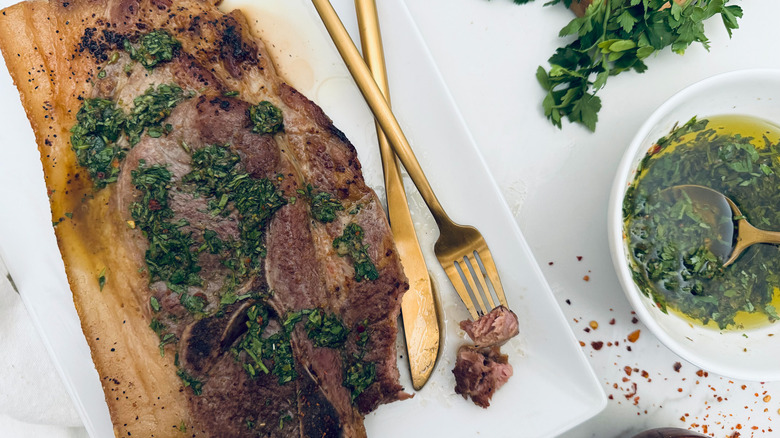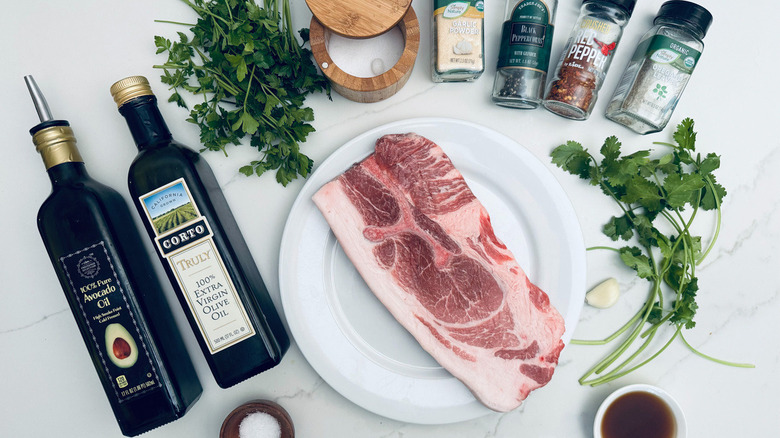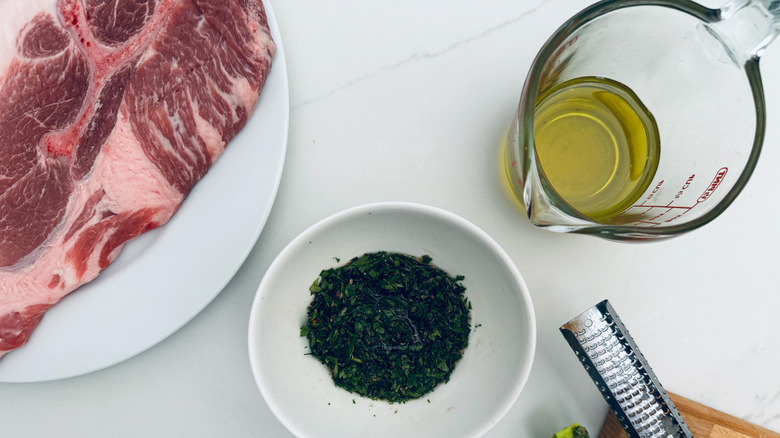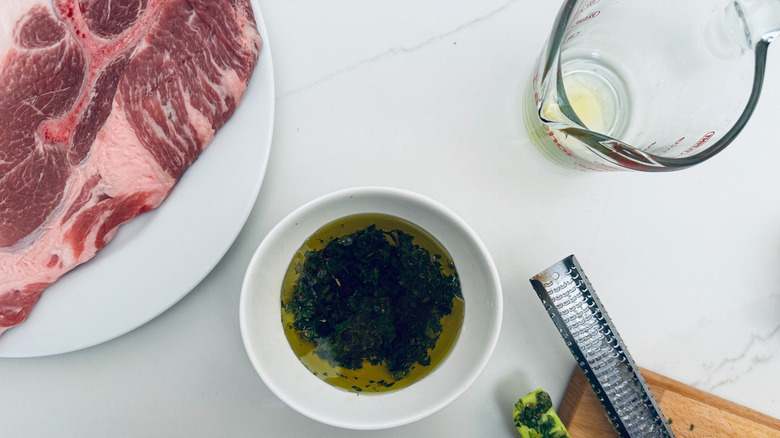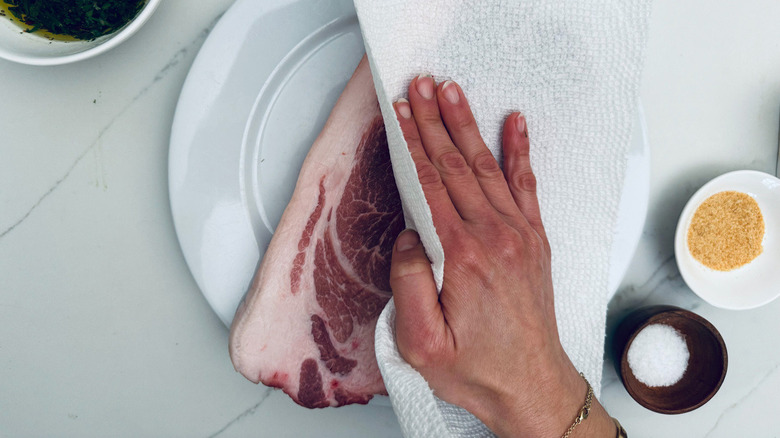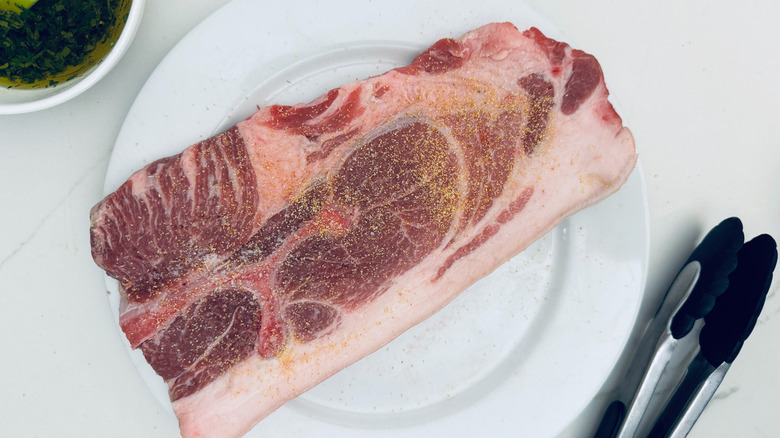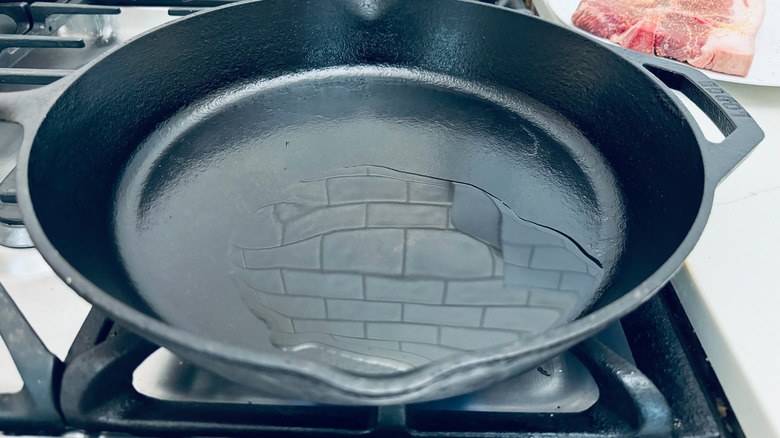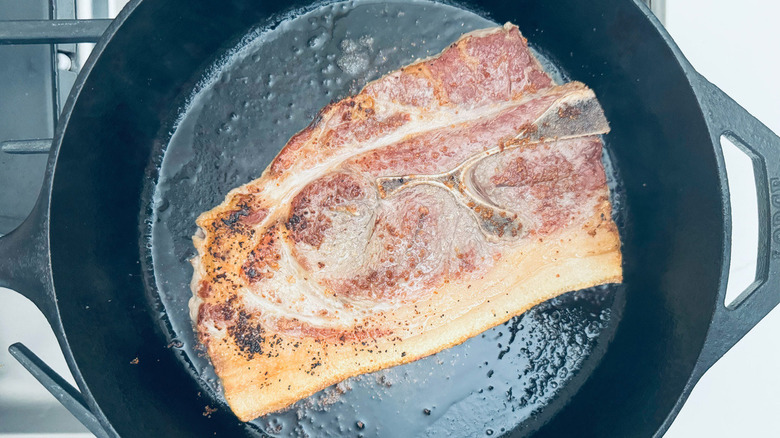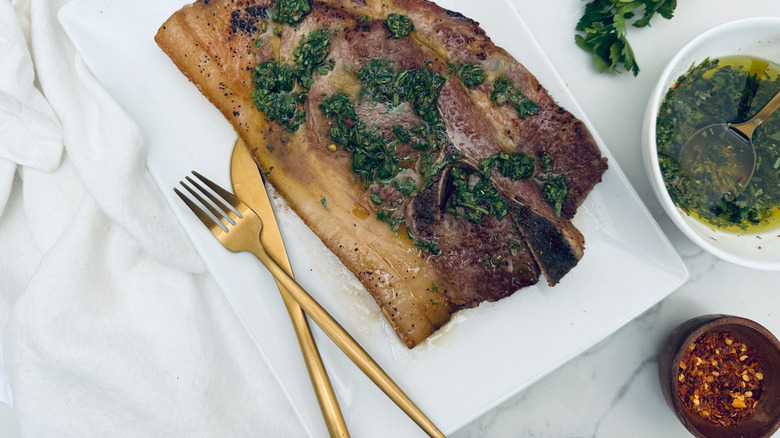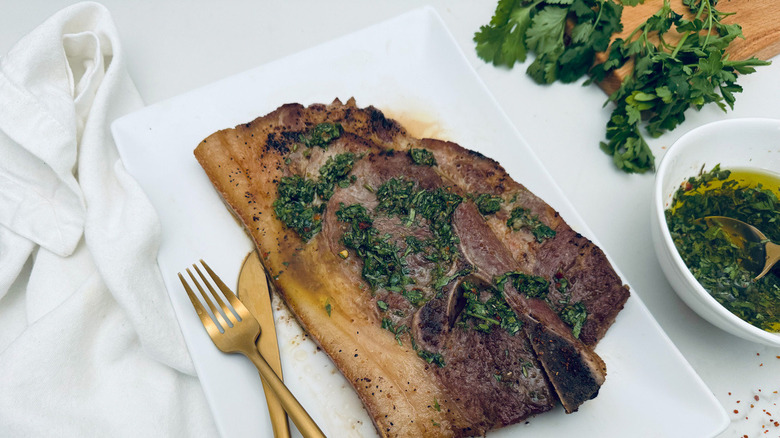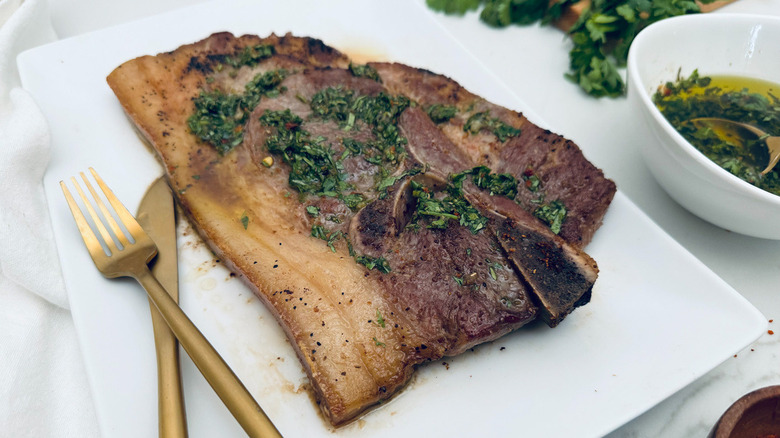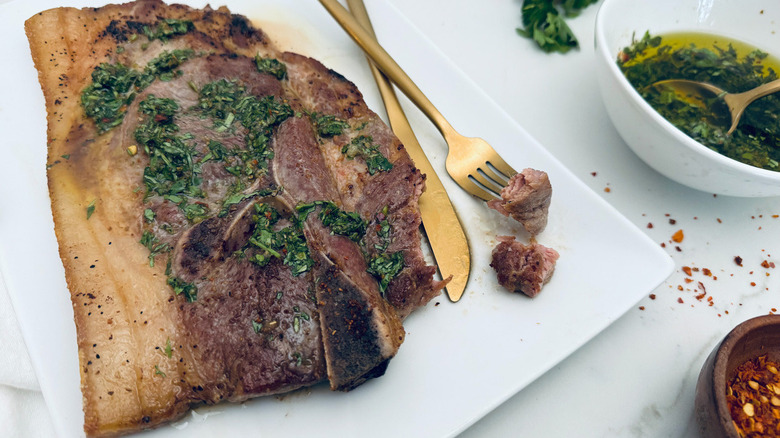Chimichurri Pork Shoulder Steaks Recipe
Chimichurri sauce, a condiment originating in Argentina, has been having a moment lately. While many cooks like to use it with steak (the Argentinian Pampas are cattle country, after all), developer Deniz Vergara feels that it goes nicely with more budget-friendly pork steaks, as well. As she says of this recipe, "These chimichurri pork shoulder chops are tender, juicy, and full of herby flavor."
Pork tends to be quite a bit cheaper than beef, and Vergara extols the virtues of pork steaks, calling them "really big and really tender with tons of marbling." She notes that the ones she's using in this recipe are ¾-inch thick, but if the ones you are using are thinner, you may need to adjust the cooking time accordingly. As always, you should be using a meat thermometer to make sure that the pork is cooked to the point where it's safe to eat (the proper internal temperature for pork is 145 F, per the USDA).
Collect the ingredients for the chimichurri pork shoulder steaks
For the chimichurri itself, you will need parsley, cilantro, red wine vinegar, garlic, oregano, crushed red pepper, salt, black pepper, and extra-virgin olive oil. The additional ingredients required for this recipe include a pork shoulder steak, garlic powder, and avocado oil.
Step 1: Make the chimichurri
For the chimichurri, mix together the parsley, cilantro, vinegar, garlic, oregano, crushed red pepper, salt, and pepper in a small bowl.
Step 2: Add the oil
Pour the olive oil on top and set aside.
Step 3: Dry the pork
Pat the pork dry with paper towels on each side.
Step 4: Season the pork
Season with salt and garlic powder on both sides.
Step 5: Warm the cooking oil
Heat the avocado oil in a large, cast-iron skillet over medium-high heat until the oil is shimmering.
Step 6: Fry the pork
Once the oil is shimmering, place the pork steak into the pan. Sear for 3 minutes on each side, until browned and the internal temperature reaches 145 F.
Step 7: Garnish with chimichurri
Remove from heat, transfer to a plate, and pour about 2–3 tablespoons of chimichurri over the top of the steak.
Step 8: Rest and serve
Allow to rest for 2–3 minutes before serving.
What sides go well with chimichurri pork shoulder steaks?
While the chimichurri in this recipe does contain some green stuff, it still doesn't count as a side dish. This means, of course, that you'll need to decide in advance what to pair your pork steaks with since they cook pretty quickly. As Vergara tells us, "Some of my favorite sides to serve these pork steaks with are creamy mashed potatoes, roasted sweet potatoes, or rice and beans."
Other options include fries or potato salad, and if you prefer a starch other than potatoes, buttered noodles would also be quite tasty alongside these pork steaks. You could also take the low-carb approach and skip the starch altogether by pairing the pork steaks with a big, green salad or a dish of coleslaw. Other side dish possibilities include elote (which you can make with canned corn instead of fresh) or refried or black beans without the rice.
What else can I use the chimichurri for besides pork shoulder steaks?
You could look at this recipe as a twofer — not only does it give you a way to prepare pork steaks, but it also supplies a recipe for homemade chimichurri. If you like, you could make a batch of the stuff all by itself, or else double up on it when you're making it as a topping for the pork steaks. Vergara says it will last for about 4 days in the refrigerator, or you could always freeze it if you need to hang onto it for a longer period.
Vergara feels that chimichurri complements a variety of meats besides pork. It is great with beef, of course, but also goes well with chicken and fish. You could try it on vegetables to give them a bit more zip and zing, as well. Or, as Vergara suggests, "Make an aioli by mixing it with some mayonnaise for some elevated sandwiches." Other ideas for using chimichurri include turning it into a dip for chips or chicken tenders or using it as an alternative to salsa for tacos and nachos.
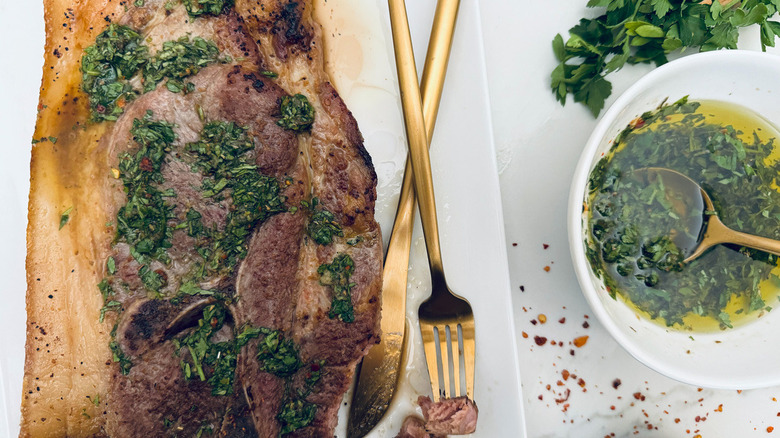
- For the chimichurri
- 2 tablespoons coarsely chopped parsley
- 1 tablespoon chopped cilantro
- 2 tablespoons red wine vinegar
- 1 large garlic clove, minced
- ¼ teaspoon dried oregano
- ¼ teaspoon crushed red pepper
- ¼ teaspoon sea salt
- ¼ teaspoon black pepper
- ¼ cup extra-virgin olive oil
- For the pork
- 1 bone-in pork shoulder steak, roughly 1-inch thick
- ¾ teaspoon kosher salt
- ¾ teaspoon garlic powder
- 1 tablespoon avocado oil
- For the chimichurri, mix together the parsley, cilantro, vinegar, garlic, oregano, crushed red pepper, salt, and pepper in a small bowl.
- Pour the olive oil on top and set aside.
- Pat the pork dry with paper towels on each side.
- Season with salt and garlic powder on both sides.
- Heat the avocado oil in a large, cast-iron skillet over medium-high heat until the oil is shimmering.
- Once the oil is shimmering, place the pork steak into the pan. Sear for 3 minutes on each side, until browned and the internal temperature reaches 145 F.
- Remove from heat, transfer to a plate, and pour about 2–3 tablespoons of chimichurri over the top of the steak.
- Allow to rest for 2–3 minutes before serving.
Nutrition
| Calories per Serving | 840 |
| Total Fat | 70.5 g |
| Saturated Fat | 20.0 g |
| Trans Fat | 2.1 g |
| Cholesterol | 142.9 mg |
| Total Carbohydrates | 2.4 g |
| Dietary Fiber | 0.5 g |
| Total Sugars | 0.1 g |
| Sodium | 669.9 mg |
| Protein | 46.7 g |
